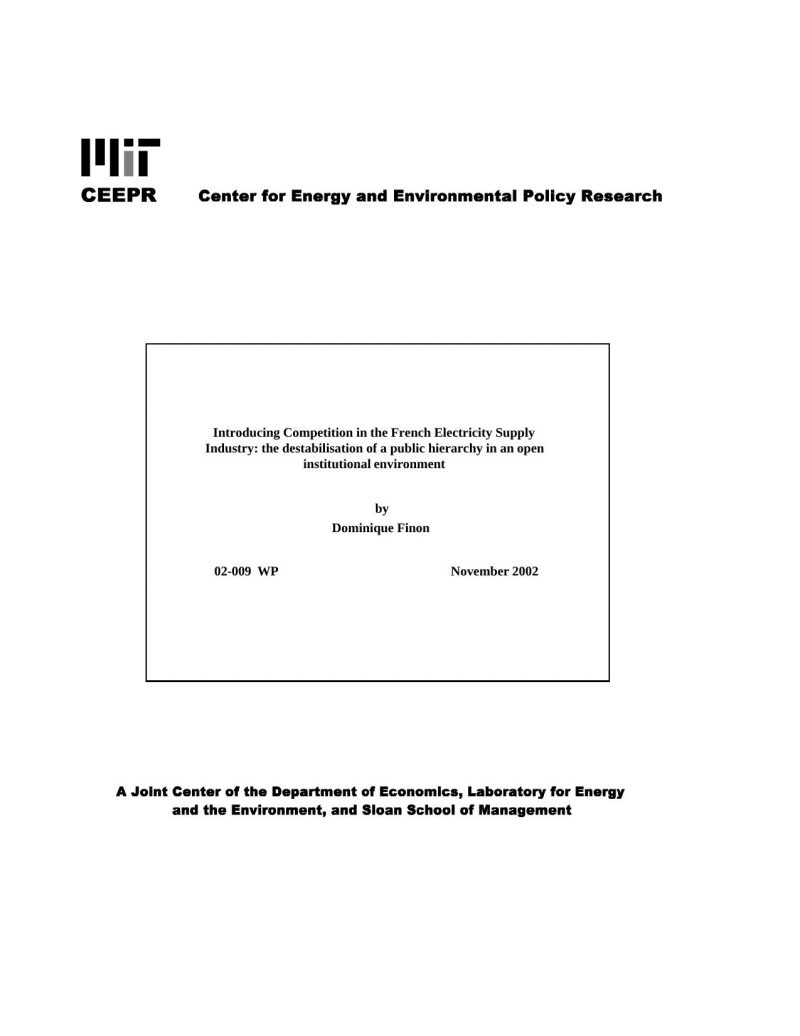Introducing Competition in the French Electricity Supply Industry: The Destabilisation of a Public Hierarchy in an Open Institutional Environment
Dominique Finon
02-Nov
The introduction of market rules in a electricity supply industry characterized by a vertically integrated monopoly and public ownership is not inherently doomed to failure if characteristics of the reform or other elements of industrial structures give room for enforcing market-rules. The organisation of the French ESI in a public monopoly was deeply rooted in French institutional peculiarities. Therefore the initial reform, which was adopted in February 2000 under the prescription of the European law of electricity market liberalization, introduced only a provision of regulated third party access to the grid, without legal separation of the transmission system operator and creation of a power exchange. But this created a dynamics of regulatory change which allows the development of an effective competition on the wholesale market and the industrial customers segment. The paper analyses how the governmental goal of preserving the national champion EDF have had two paradoxical effects in favour of competition development and the building of safeguards for the entrants:
- the creation of a credible regulatory governance structure with effective power of control on the network access, and which promoted market-rules and the creation of a power exchange for balancing the incumbent’s dominant position,
- the enforcement of the credibility of the regulatory framework by the self control of the incumbent on the use of its dominant position and on the capture of the regulator, This two effects results from the influence of the European institutional environment which is superposed to the national one, in particular under the intensive scrutiny of the European Commission, on a model far behind the competitive model. The paper concludes to the originality of such an institutional model : a permanent regulatory threat on the incumbent for balancing the effects of public property and integration of industrial structures. In other words it would not only be the industrial structures which determine the market players’ behaviour but also the credibility of market rules and their enforcement by the regulatory threat and the self control of the incumbent.
This paper has been presented at the 2002 annual Conference of the International Society for New Institutional Economics (ISNIE) held in Cambridge (Mass.) on September 27-29. The author thanks Paul Joskow and Jean- Michel Glachant for their useful comments on the draft version.



